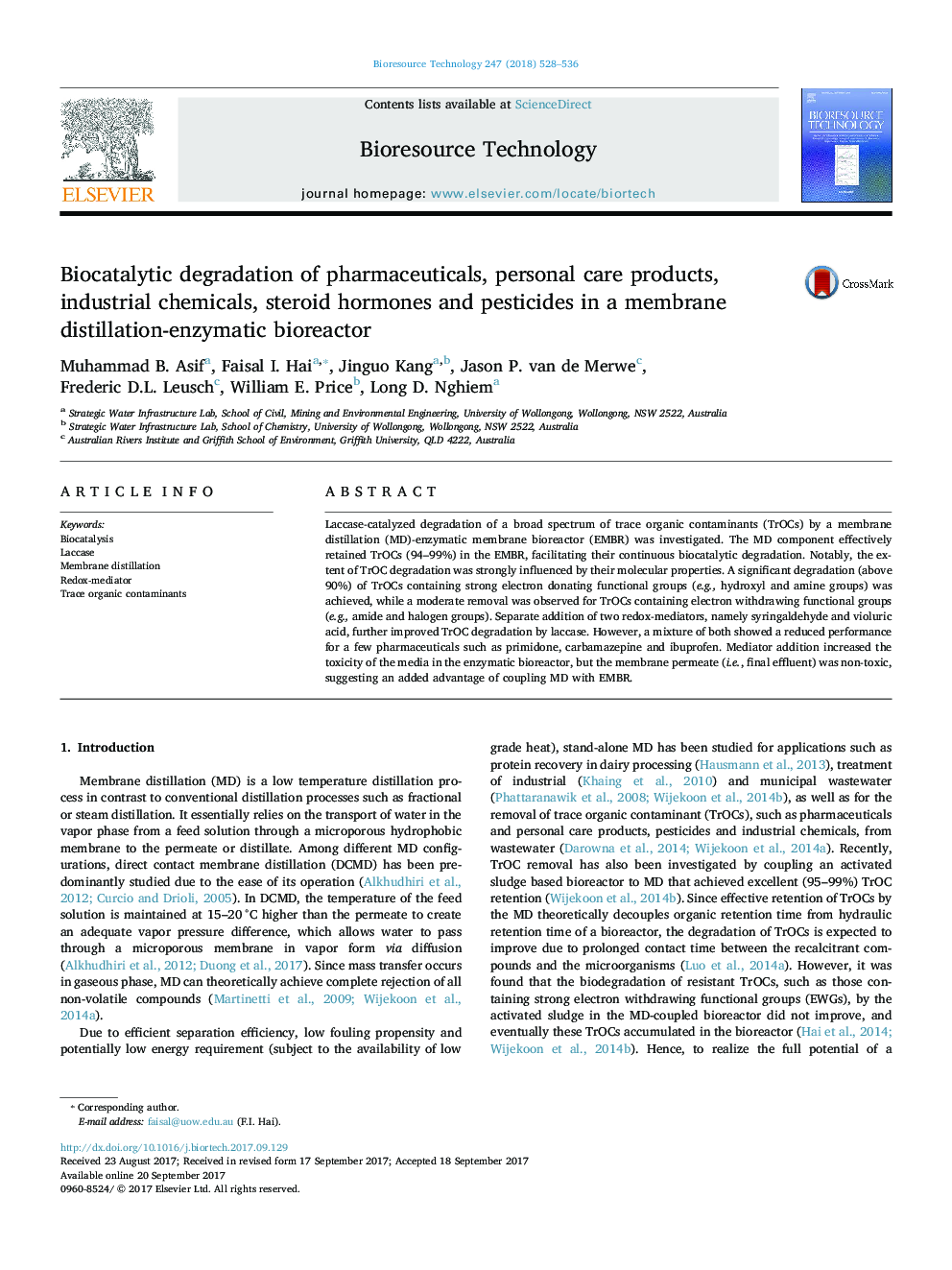| کد مقاله | کد نشریه | سال انتشار | مقاله انگلیسی | نسخه تمام متن |
|---|---|---|---|---|
| 4996673 | 1459897 | 2018 | 9 صفحه PDF | دانلود رایگان |
- Coupling membrane distillation to an enzymatic bioreactor effectively removed TrOC.
- Laccase-catalyzed degradation contributed significantly to overall TrOC removal.
- Redox-mediator (SA or VA) addition showed TrOC-specific improved degradation.
- Mixture of mediators SA-VA could not further improve resistant TrOC degradation.
- Membrane permeate was non-toxic, and membrane properties remained unaffected.
Laccase-catalyzed degradation of a broad spectrum of trace organic contaminants (TrOCs) by a membrane distillation (MD)-enzymatic membrane bioreactor (EMBR) was investigated. The MD component effectively retained TrOCs (94-99%) in the EMBR, facilitating their continuous biocatalytic degradation. Notably, the extent of TrOC degradation was strongly influenced by their molecular properties. A significant degradation (above 90%) of TrOCs containing strong electron donating functional groups (e.g., hydroxyl and amine groups) was achieved, while a moderate removal was observed for TrOCs containing electron withdrawing functional groups (e.g., amide and halogen groups). Separate addition of two redox-mediators, namely syringaldehyde and violuric acid, further improved TrOC degradation by laccase. However, a mixture of both showed a reduced performance for a few pharmaceuticals such as primidone, carbamazepine and ibuprofen. Mediator addition increased the toxicity of the media in the enzymatic bioreactor, but the membrane permeate (i.e., final effluent) was non-toxic, suggesting an added advantage of coupling MD with EMBR.
Journal: Bioresource Technology - Volume 247, January 2018, Pages 528-536
